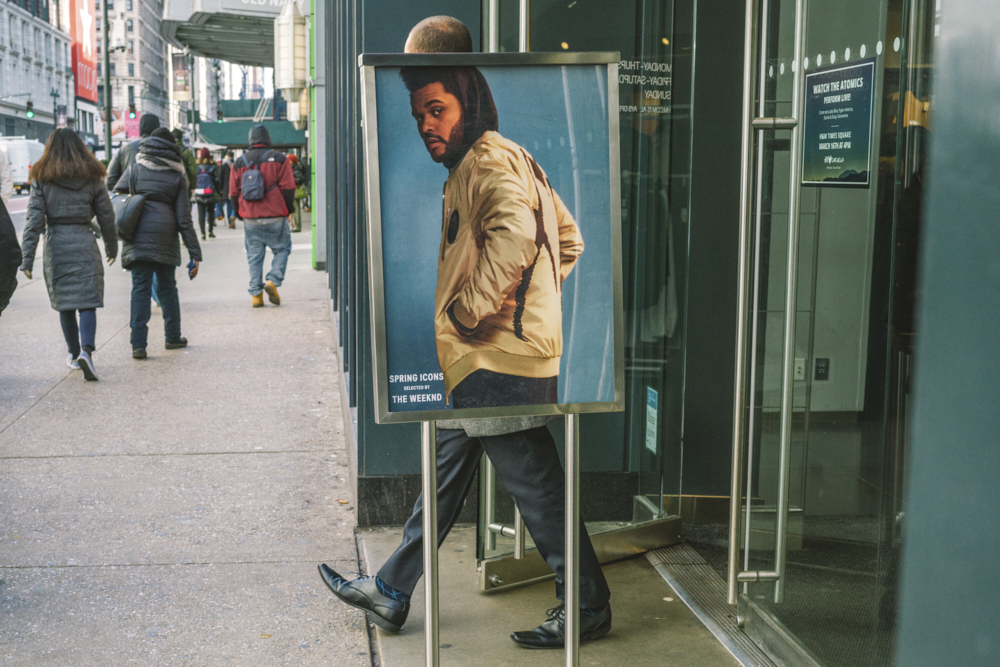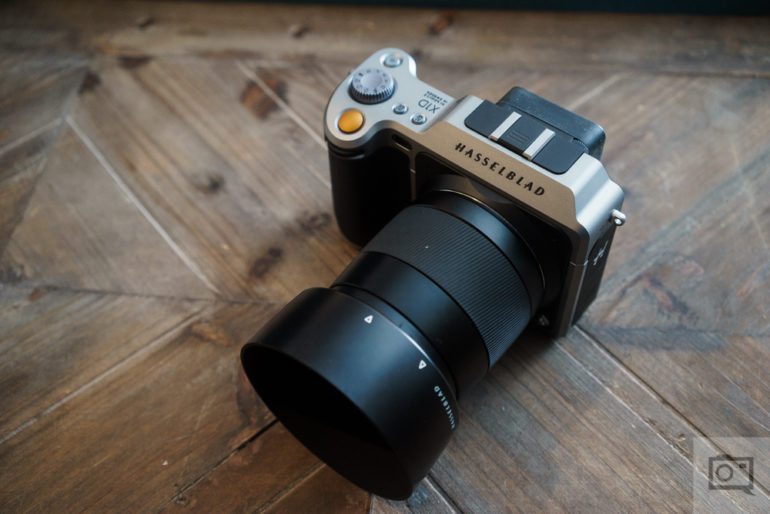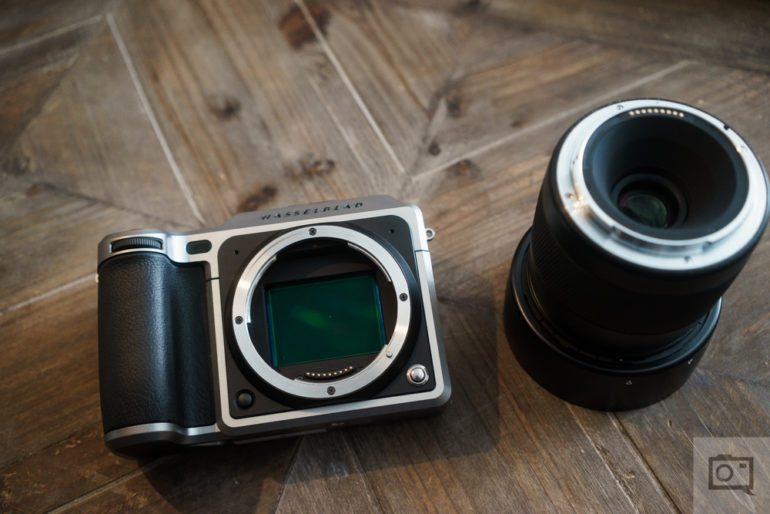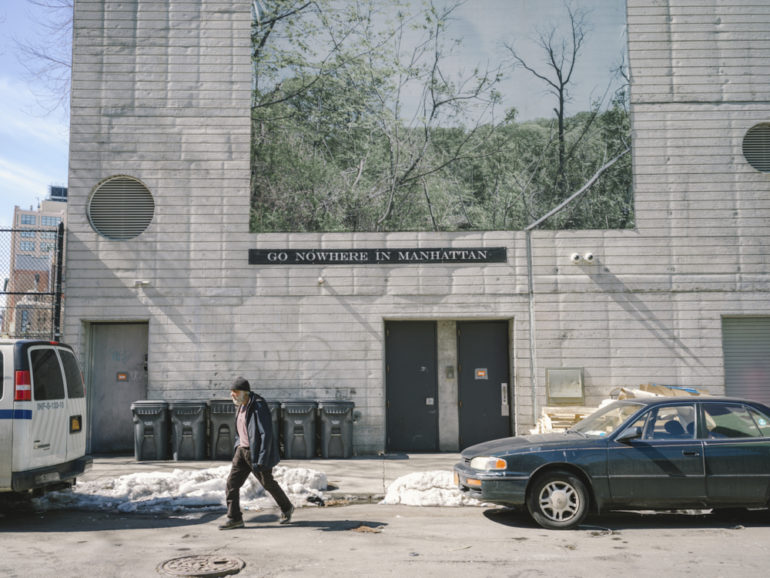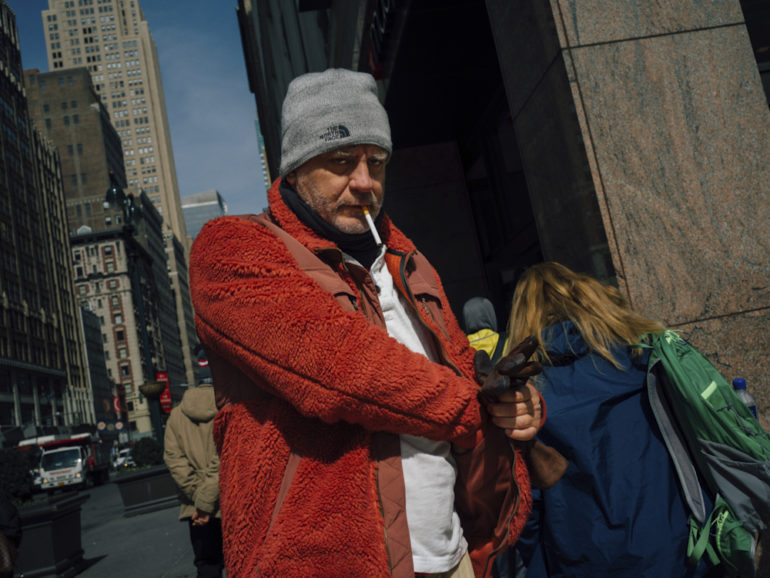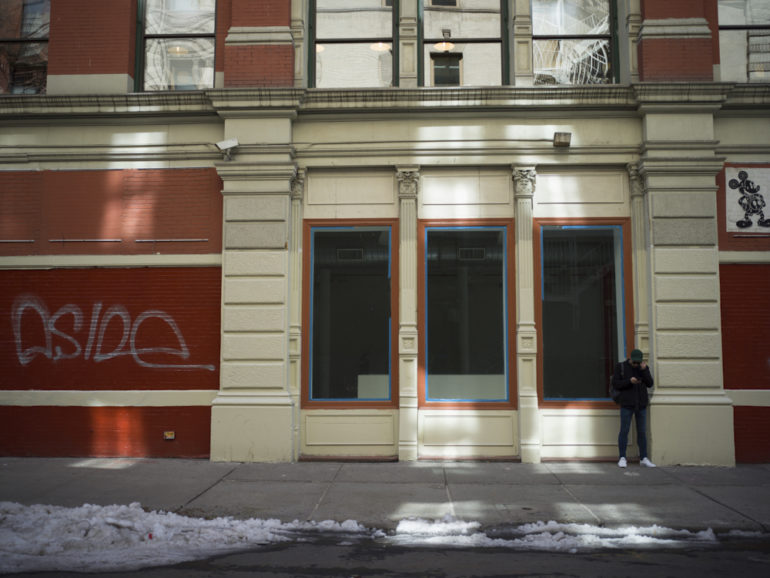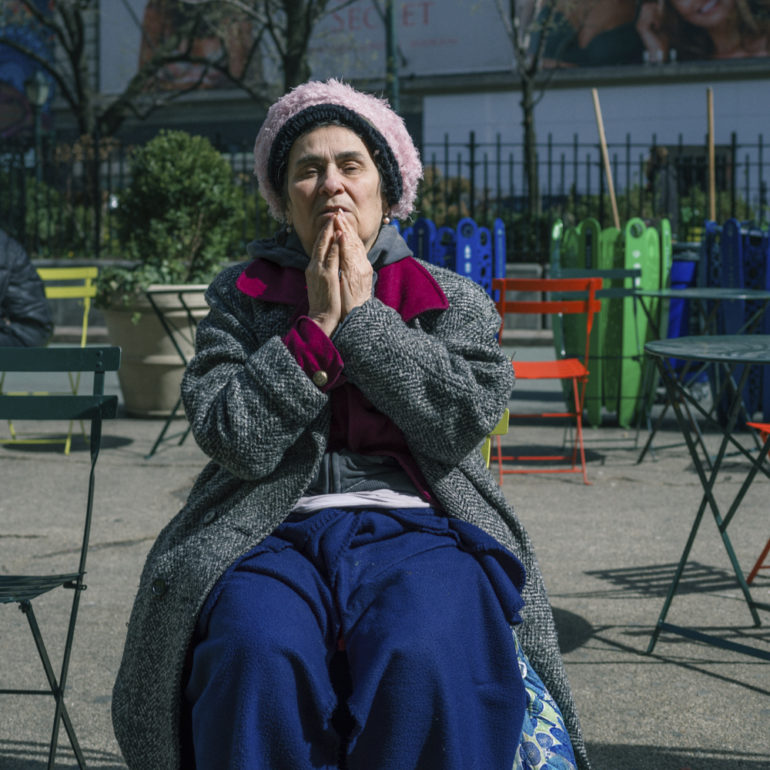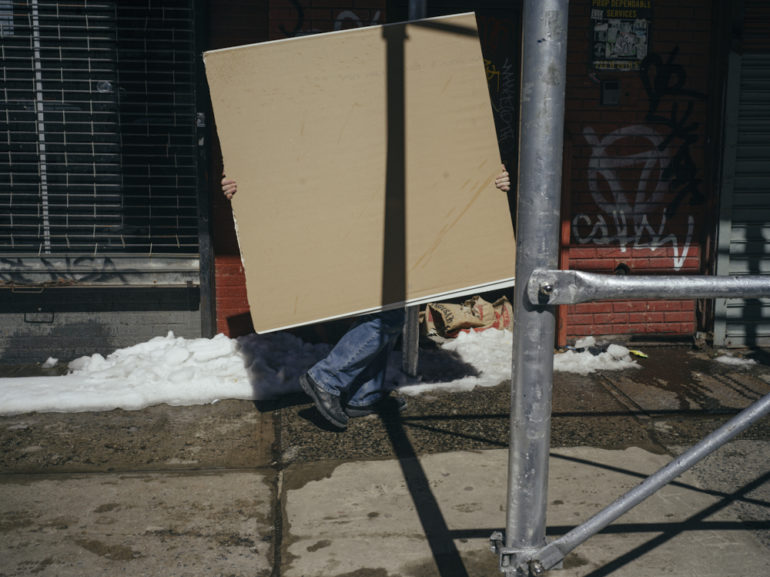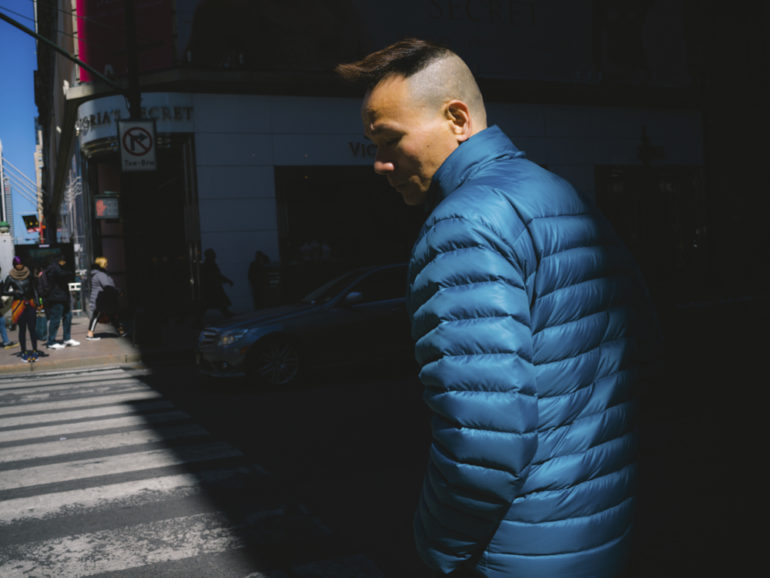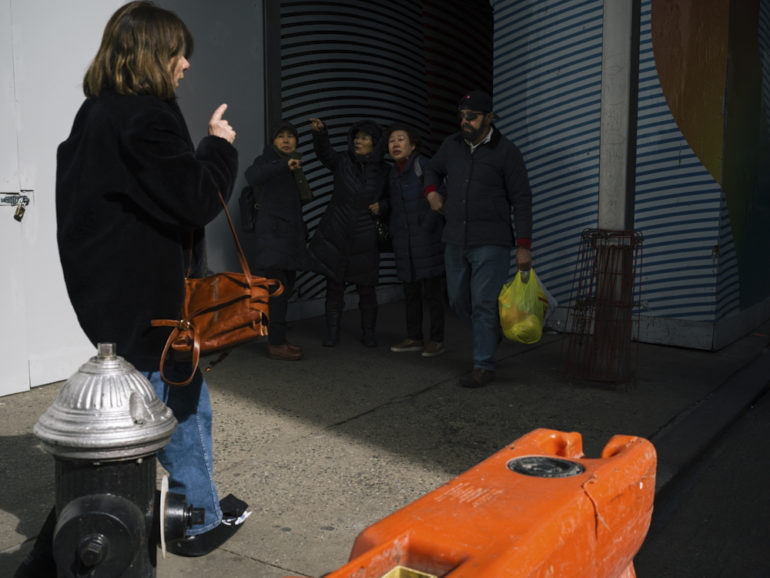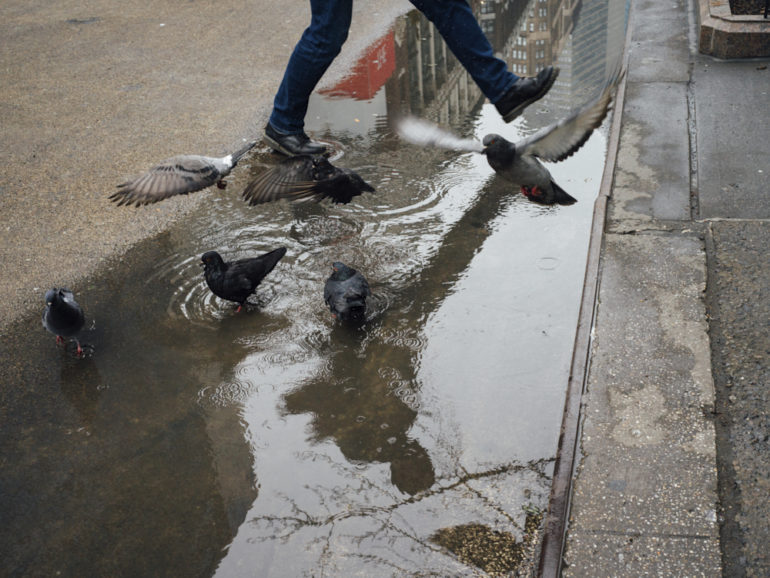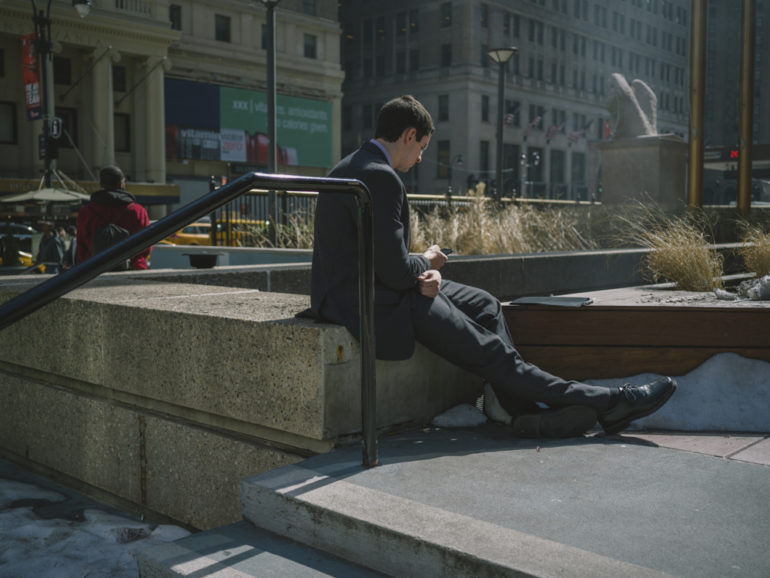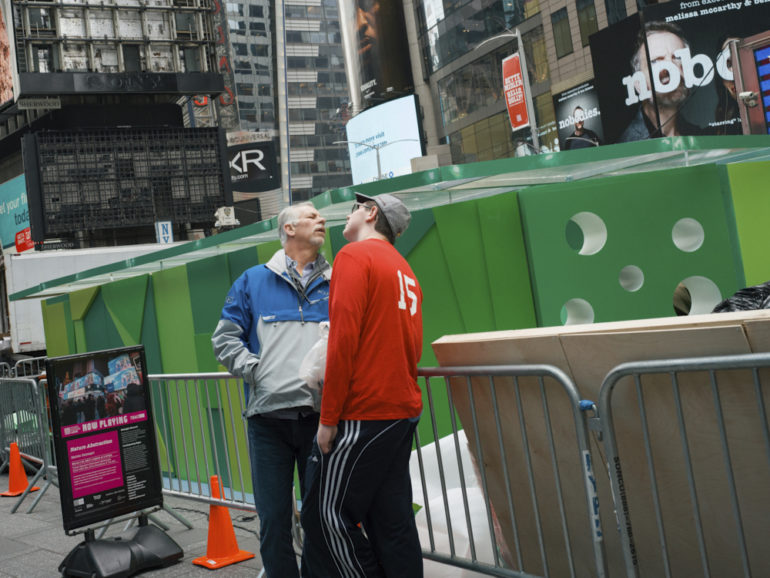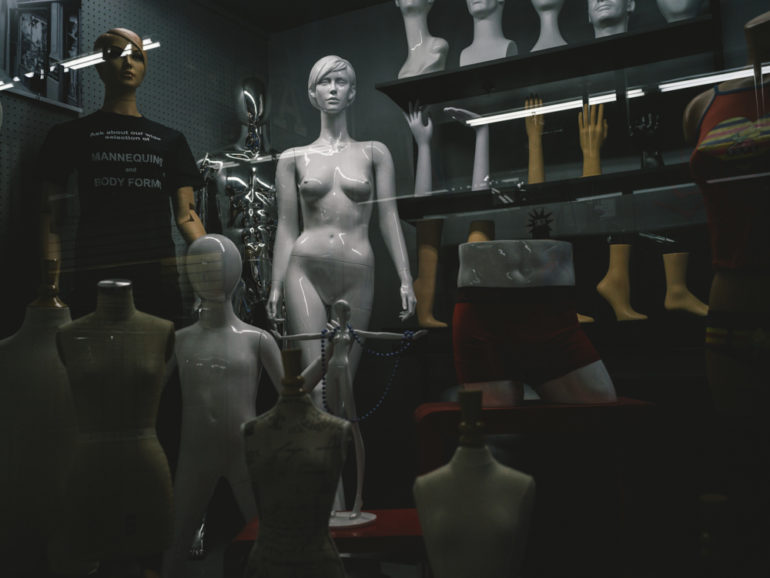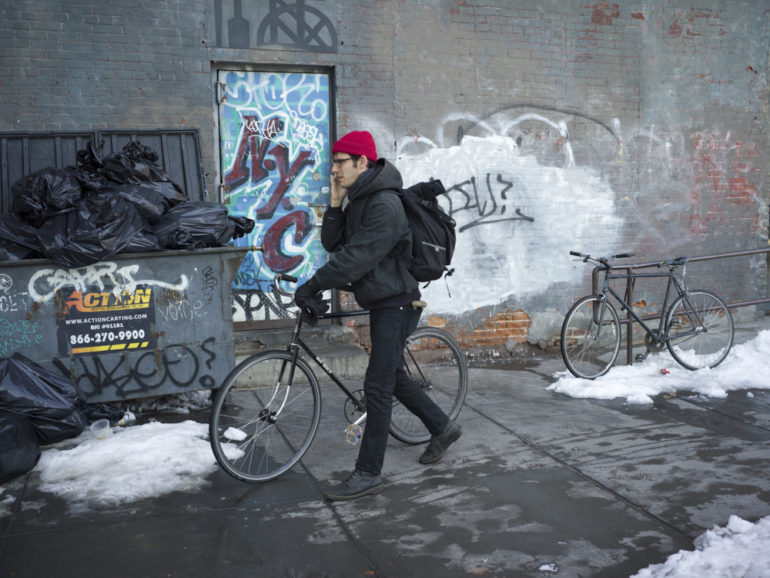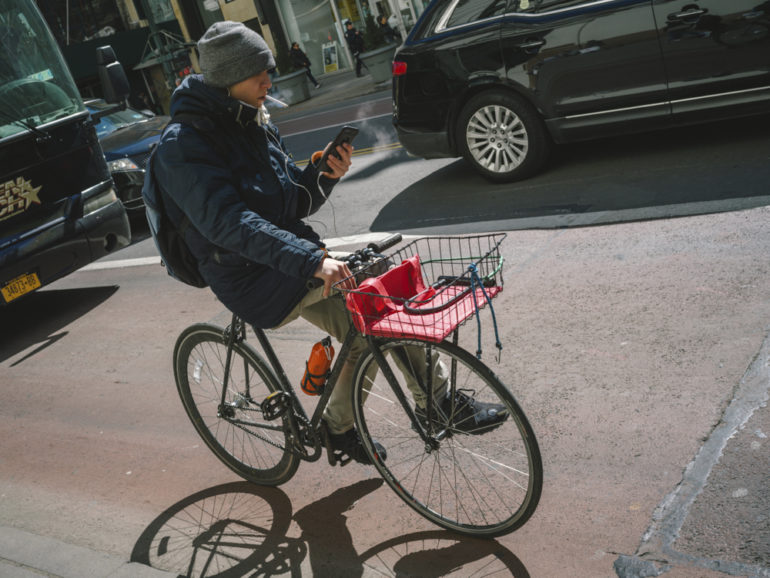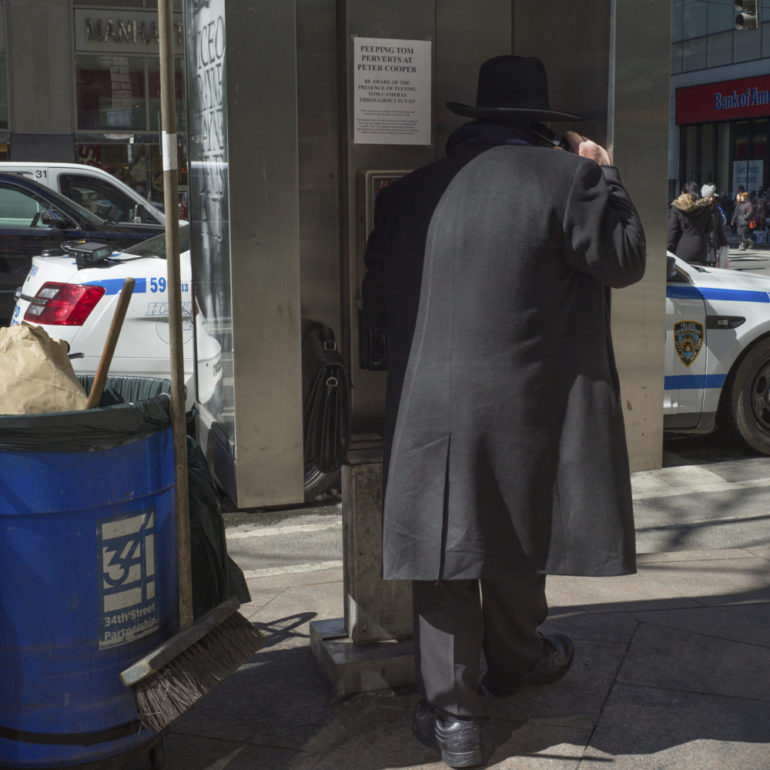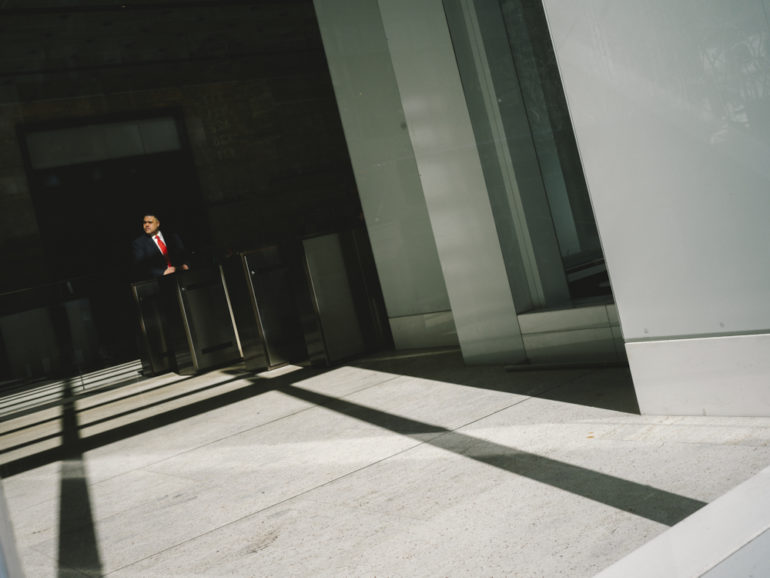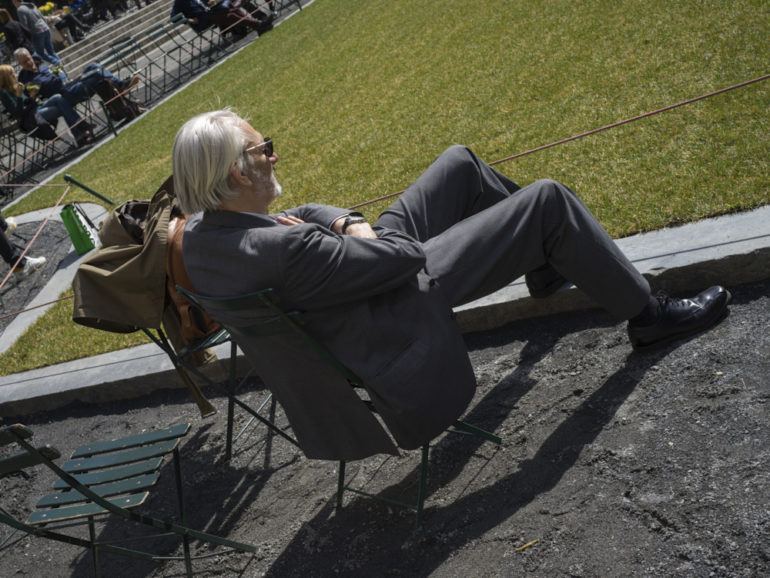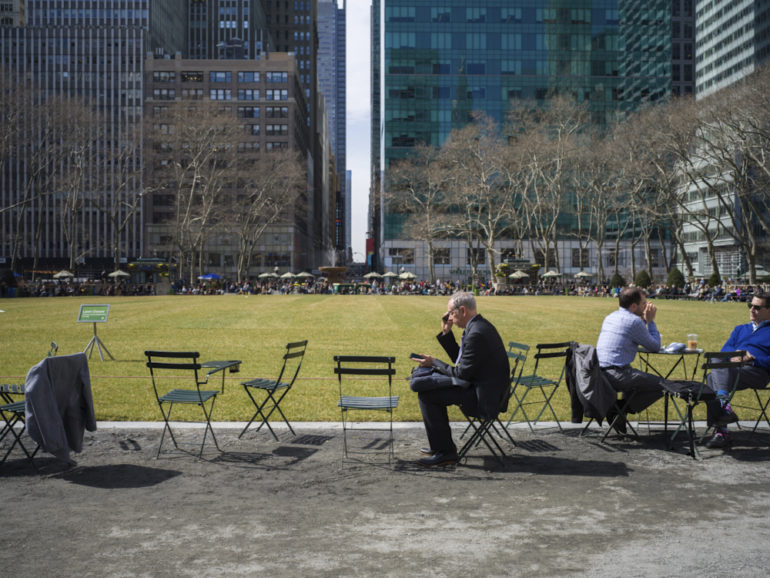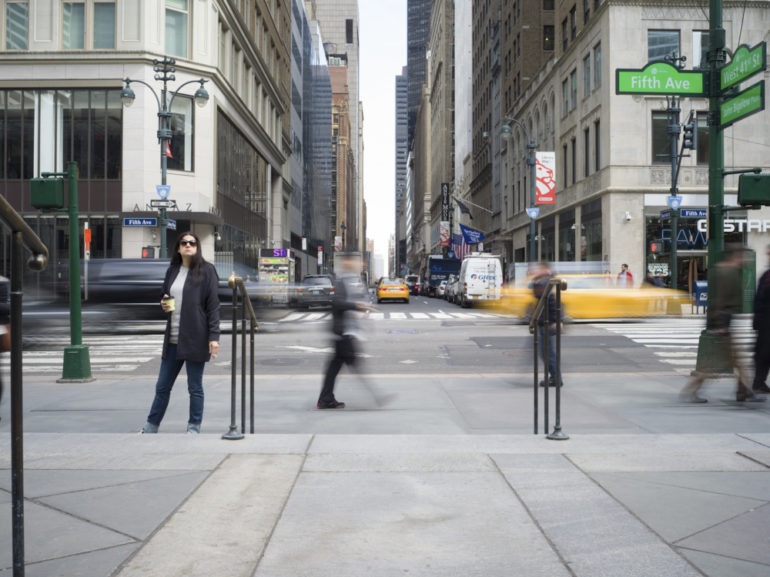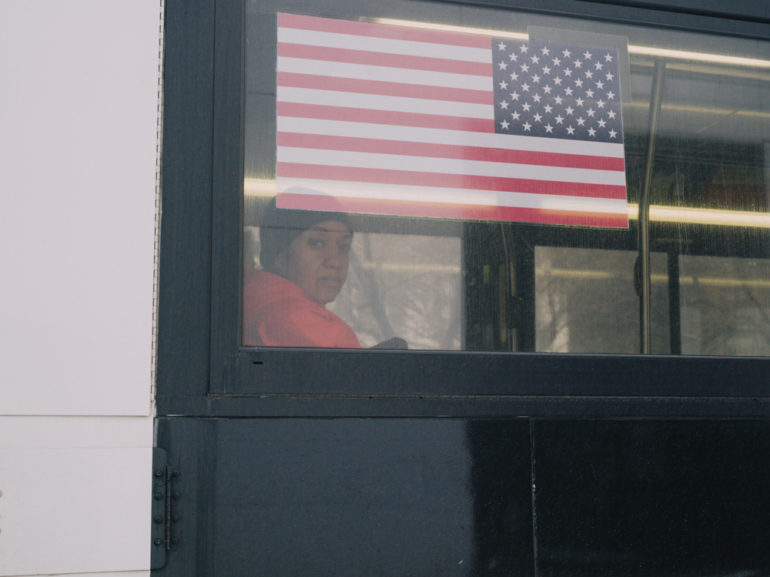Last Updated on 04/06/2017 by Chris Gampat
All images and text by Jonathan Higbee.
I like to work a scene when I’m out shooting the streets. I find a vibe or background or light or whatever that exudes life, and I drain every last drop of potential the hell out of it. In attempting to capture a split-second candid moment, it’s absolutely critical I use a camera that’s quick, easy and inconspicuous. In the interest of remaining a stealth street photography ninja, it never seemed possible that I’d be able to make candid photos with any bulky, slower-paced and very obvious digital medium format camera. In June 2016, Hasselblad announced the first mirrorless digital medium format camera, the X1D-50c. Suddenly, it appeared the barriers to obtaining that “medium format look” in street photography had been demolished.
The press has breathlessly referred to the X1D as a “game changer” since the announcement. I set out to find out if it was true, particularly as the pioneering mirrorless medium format camera applies to the game of street photography. I’ve put the camera through its paces over the past few weeks, shooting as many styles of urban photography as possible to give a clear idea of its capabilities for this here non-review. Though many of the shots shared here are atypical for me and likely work I’d otherwise not show, I believe they illustrate the flexibility and power of the X1D whether you’re shooting candid or posed urban photography. (The images here are a mix of SOOC and Lightroom-processed. For even more X1D street samples, visit my site.)
Spoiler alert if it wasn’t already obvious: The Hasselblad X1D fundamentally advances what’s possible in the outrageously popular genre.
Size and Handling
The X1D is tiny when compared to other digital MF beasts. It even has the edge on size when held up against most modern DSLRs. It packs away in a bag effortlessly, taking up little space. Around the neck, the 725 grams (body only) allows me to shoot an entire day without discomfort. Try shooting the streets for more than a few hours with the Pentax 645Z without the need for an Advil or four. I have talented friends who produce jaw-dropping travel photography with the Z, but they’ll be the first to talk about the challenge of lugging the camera and a lens around the streets for a few hours, let alone up a mountain or hill.
Though relatively small, the X1D feels sturdy, durable and well-made; its prominent protruding hand grip is frankly the best I’ve experienced on a camera, giving four fingers roomy and secure real estate. The compactness of this digital medium format camera is hard to overstate: it’s one of the predominant reasons the X1D will make medium format street photography so accessible.
Performance for Street Photography
My main street shooter is a Leica Q, so the bar is quite high as far as speed goes. I did not go in to using the X1D with the expectation that it would match the Q or even come close, and you should not either. It is medium format after all, and for the image quality that comes with this territory, a little bit of deliberation on the scene in front of you makes it worth it. Deliberation is part and parcel with “working the scene”, which is a big reason why I’m so enthused about this camera for my street photography.
“Confession: I don’t use autofocus when I’m shooting the streets. Over the years I’ve found that my hit to miss ratio is greatly improved when I zone focus manually.”
Still, this is street we’re talking about. It’s hard to expect consistently impactful results if the camera being used is slow as molasses. Thankfully, unlike any other MF camera I’ve used on the streets (including a Hasselblad 500 CM) the X1D is fast enough to get the shot every time. From the initial shutter press to the image saved to card, I never experienced frustration with speed.
The X1D’s contrast-detection autofocus system might not be suitable for energetic sports shooting in its current incarnation, but it’s fast enough for street in good to great light and even performs better than expected in low light. I’d go as far as to say that autofocus on the X1D feels like it’s working at the same speed as the original Sony A7R. (I’ve emphasized “feels” because I’ve not conducted any rigorous laboratory tests to confirm this; in fact, this entire report is based on the experience of someone who failed high school math.) Even assessing this camera’s autofocus was disorienting — it was a challenge to remember that I was even getting this level of great performance out of a digital medium format camera when putting the AF through its paces.
Confession: I don’t use autofocus when I’m shooting the streets. Over the years I’ve found that my hit to miss ratio is greatly improved when I zone focus manually. Despite having no depth of field scale on the XCD lenses or even a digital version, the X1D is lightning fast when used this way. The implementation of focus peaking is my favorite I’ve used of any camera so far, and being able to back button AF while in manual focus mode affords the best of both AF/MF worlds. A big firmware suggestion for Hasselblad does include a digital depth of field scale, though.
Metering is managed quite well in this kit despite some of my most-relied upon settings currently unavailable. Out of the metering modes, center-weighted has been my favorite for the fast-paced lighting needs on the streets. ETTR by about +1/3 of a stop for the best evenly-exposed image and you’ll be set. For now, there’s not much granular auto-ISO control (which the Q has made me lazily reliant upon), so I’ve mostly been dusting off my ability to use the Sunny 16 method. The X1D has been very cooperative and I’m stoked with the results I’ve been getting. Even if (when??) firmware updates add finer control here I may actually stay in Full M all the way.
The X1D’s shutter, specifically, has been debated a lot online recently. There is an audible shutter click, though if you’ve ever worked with anything that’s not mirrorless you won’t notice. Your opinion of shutter sound doesn’t really matter though, it’s what those around you think about it. This was one of my concerns before receiving the X1D as a disturbing shutter noise can ruin any hope for an authentic street image. I’m ecstatic to report that not a single person has been alerted to my presence while photographing New York City with the X1D.
There has also been chatter in forums with folks wondering if there is any shutter lag. Just like becoming acquainted with any new camera, it took a few times out shooting before I understood the X1D’s particular way of working. The leaf shutter is one of the marquee features of this camera, and the haptics and lightning-fast clicks it produces may be new for some photographers. This may be misinterpreted as shutter lag which in reality is unbelievably minimal. There are also some quirks while the camera is processing and recording the image to card, like the screen blacking out momentarily. The camera still functions normally (will continue recording images if in burst mode, for example) during the screen cycling. I wonder if this, too, is misinterpreted as shutter lag. It obviously would be a street deal breaker if the X1D had a pronounced or even noticeable shutter lag. But this isn’t a thing.
“I shoot street with everything from a gameboy camera to an iPhone to Instax Wide, and pray at the altar of Daido Moriyama, so sometimes imperfection is perfection when it comes to making evocative street work.”
Battery life is typical for a powerful mirrorless camera. I’ve been able to make about 300 – 350 shots on average in one charge which is fine, but the current lack of availability (at least in the U.S.) of extra X1D batteries makes this lifespan feel particularly acute. I think two batteries total will be enough for a full day of street shooting.
Another important aspect when it comes to photography of any kind but especially street is: how well does the camera allow itself to fade away so the artist can focus as completely as possible on the moment?
The X1D seems like it was built with this in mind. In addition to the insubstantial size, the menu system, user interface and user workflow of the camera were thought out so well that adjustments quickly become second nature. And that’s saying a lot for a camera that’s predominantly meant to be interacted with via touchscreen. Menus are clear and straight to the point, but settings are easily altered without looking at the touchscreen.
For the workflow that I and many other photographers employ, the X1D will be an unbeatable street photography kit if some of the things we’ve been talking about so far are tackled: Auto-ISO should be available in M mode; maximum-shutter speed setting should be included in auto-ISO mode, and more options for wrangling settings between the EVF and the screen would be nice. Then, the X1D will truly be able to fade away and free up a street photographer’s mind to be present in the moment. It’s really impressive when the only workflow resistance I’ve experienced in the field are things that can be addressed with firmware! (Note: Hasselblad has been fantastic with regular firmware updates.)
Image Quality
I mean, this is why we all came here right? Image quality is the star of the show with the X1D. For me, it’s frankly kinda weird to deeply consider image quality in the street photography conversation. IQ isn’t the primary concern of the genre. I shoot street with everything from a gameboy camera to an iPhone to Instax Wide, and pray at the altar of Daido Moriyama, so sometimes imperfection is perfection when it comes to making evocative street work. (I’ll be the first to admit that some of these sample images are just a tad out of focus, which doesn’t bother me for street work.)
Image quality, however, is where the X1D has the best chance to disrupt street photography.
The XCD lenses Hasselblad has introduced for the X1D are garnering praise everywhere you look. I’ve only been able to test the XCD 45mm F3.5 (roughly 35mm in full-frame equivalence) but I can see why the reviewers who know much more about physics, optics and lens distortion than me are offering applause. The 45 retains sharpness from center to edge throughout its entire range, even, impressively, opened to its widest. Lens corrections I’ve made in post have been minimal and nothing outside of what’s expected for the resolution, sensor and focal length. Images produced by this lens and camera combo are sharp but not clinical, and full of life. More importantly, though: the 45 doesn’t add much bulk to the X1D, really helping seal the deal when carrying the kit around the streets for a full day.
The raw files straight out of the camera ooze an unmistakable cinematic quality, which for many is the “medium format look.” The way the X1D reads light has literally caused me to well with a tear or two (not joking); its handling of light is poetic and moving and demands attention. The tonal transitions, especially in the highlights, really imbue well-lit subjects with a punch. The much-ballyhooed (for a reason) dynamic range of the X1D files affords more wiggle room in post. It’s typically best to get it right in camera in general, but with street photography — where you must be light-speed in ever-changing, uncontrolled environments — an ability to push shadows and pull highlights and retain detail after the fact is a huge asset. I’ve shot this thing up to 6400 so far, with well-exposed images here retaining impressive cleanliness. Pushing ISO further results in noise that to many resembles film-like grain, though I personally am not a fan of any kind of digital noise.
And the color. Man, the color. Warning: If you make color street photography, your face may melt from the buttery-smooth and true-to-life photographs this camera can produce. It will spoil you.
Conclusion
My style of working the scene relies heavily on capturing the exact moment, and this kit has easily risen to the rigorous challenge. Hopefully you can see that in some of the shots here. Yes, you’re sometimes reminded this is a first-gen product and sure there’s a wishlist for firmware updates, but even then the Hasselblad X1D has earned its “game changer” title — especially when it comes to street photography.
________
If you want to know more about how I work the scene to make my street photography, join me for a Facebook LIVE workshop on Saturday, April 15 at 2 p.m. eastern! I’ll provide insight, tips and tricks and answer a live Q&A while we work a New York City street scene together. Sponsored by the Phoblographer and Zeiss. Mark your calendars and follow me on Facebook to tune in! Be sure to also visit my website and Instagram.


